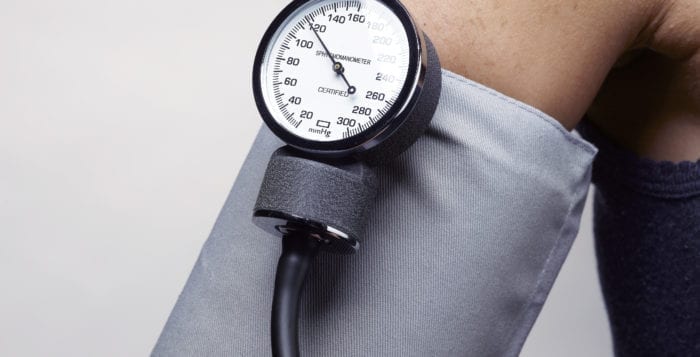By David Dunaief, M.D.
Migraines are a debilitating disorder. Symptoms typically include nausea, photophobia and phonophobia — sensitivity to light and to sound, respectively. The corresponding headache usually is unilateral and has a throbbing or pulsating feeling.
Migraines typically last anywhere from four to 72 hours, which is hard to imagine. Then, there is a postdrome recovery period, when the symptoms of fatigue can dog a patient for 24 hours after the original symptoms subside. Migraines are among the top reasons patients see a neurologist (1).
According to the American Migraine Foundation, there are approximately 36 million migraineurs, the medical community’s term for migraine sufferers. This has increased from 23.6 million in 1989. Women are three times more likely to be affected than men (2), and the most common age range for migraine attacks is 30 to 50 (3), although I have seen them in patients who are older.
What causes a migraine?
The theory was once simple: It was caused by vasodilation (enlargement) of the blood vessels. However, this may only be a symptom, and there are now other theories, such as inflammation of the meninges (membrane coverings of the brain and spinal cord). As one author commented, “Migraine continues to be an elephant in the room of medicine: massively common and a heavy burden on patients and their healthcare providers, yet the recipient of relatively little attention for research, education, and clinical resources” (4). There are many potential triggers for migraines, and trying to avoid them all can be worse than navigating a minefield. Triggers include stress, hormones, alcohol, caffeine, diet, exercise, weather, odor, etc. (5).
Focusing on prevention
There are many problems with treating acute migraine attacks beyond the obvious patient suffering. Eventually, patients may increase tolerance to drugs, needing more and more medication until they reach the maximum allowed. There are also rebound migraines that occur from using medication too frequently — more than 10 days in the month — including with acetaminophen (Tylenol) and NSAIDs (6). There are several options for preventive paradigms, some of which include medication, supplements, alternative therapies and dietary approaches.
Medication’s role
There are several classes of medications that act as a prophylaxis for episodic (less than 15 days per month) migraines. These include blood pressure and anti-seizure medications, botulinum toxin (botox) and antidepressants (7).
Blood pressure control itself reduces the occurrence of headaches (8). The data is strongest for beta blockers. Propranolol, a beta blocker, has shown significant results as a prophylaxis in a meta-analysis (group of studies) involving 58 studies where propranolol was compared to placebo or compared to other drugs (9). However, it showed only short-term effects. Also, there were a substantial number of dropouts from the studies.
Topiramate, an anti-seizure medication, showed a significant effect compared to placebo in reducing migraine frequency (10). In a randomized control trial (RCT) that lasted six months, there was a dose-response curve; the higher the dose, the greater the effect of the drug as a prophylaxis. However, drugs come with side effects: fatigue, nausea, numbness and tingling. The highest recommended dose is 100 mg because of side effects. As a result, almost one-third or 30 percent of patients cease therapy at the 200-mg dose because of side effects (11).
Botulinum toxin type A injection has not been shown to be beneficial for preventive treatment of episodic migraines but has been approved for use as a prophylaxis in chronic (greater than 15 days per month) migraines. However propranolol, mentioned already, has shown better results with fewer adverse reactions (12).
Alternative approaches
Butterbur, an herb from the butterbur (Petasites hybridus) root, was beneficial in a four-month RCT for the prevention of migraine (13). The 150-mg dose, given in two 75-mg increments, reduced the frequency of migraine attacks by almost twofold compared to placebo. This herb was well tolerated, with burping the most frequent side effect. Only Petasites’ commercial form should be ingested; the plant contains pyrrolizidine alkaloids, which may be a carcinogen and seriously damage the liver.
Feverfew, another herb, but this time the leaves are used for medicinal purposes, unfortunately, had mixed prophylaxis results. In a meta-analysis, study authors concluded that feverfew was not more beneficial than placebo (9). And, the most significant caveat with herbal medications is that their safety is not regulated by the FDA nor by any officially sanctioned regulatory body.
What about supplements?
High-dose riboflavin, also known as vitamin B2, may be an effective preventive measure. In a small RCT, 400 mg of riboflavin decreased the frequency of migraine attacks significantly more than placebo (14). The number of days patients had migraines also decreased. The side effects were mild for both placebo and riboflavin. Thus, this has potential as a prophylaxis, though the trial, like most of those mentioned above, was relatively short.
How about diet and exercise?
From my experience and those of other physicians, such as Dr. Joel Fuhrman and Dr. Neal Bernard, nutrient-dense foods are potentially important in substantially reducing the risk of migraine recurrence. I have seen many patients, both in my practice and in the three years I worked with Dr. Fuhrman, do much better, if not recover. There are a number of foods that are unlikely to cause migraine and reduce their occurrence, such as cooked green, orange and yellow vegetables, some fruits — though not citrus fruits — certain nuts, beans and brown rice. The number of foods can be expanded over time.
Interestingly, endogenous (from within the body) and exogenous (from outside the body, such as preservatives) toxins cause high levels of free fatty acids and blood lipids that are triggers for migraine (15). Higher fat diets and high levels of animal protein have been associated with more migraines. In addition, obesity may increase the frequency and severity of migraines (16).
Also, there was a small randomized controlled trial that showed exercise with 40 minutes of cycling three times a week may be comparable to medication for migraine prevention (17). Thus, there are several options for preventing migraines. The most well studied are medications; however, the most effective may be dietary changes and exercise, which don’t precipitate the rebound migraines that medication overuse may cause. And the herb butterbur may be an option as well.
References: (1) uptodate.com Sept. 2011. (2) Headache. 2001;41(7):646. (3) Medscape.com. (4) Annals of Neurology 2009;65(5):491. (5) Cephalalgia. 2007;27(5):394. (6) Headache. 2006;46 Suppl 4:S202. (7) uptodate.com. (8) Circulation. 2005;112(15):2301. (9) Cochrane Database Syst Rev. 2004. (10) JAMA. 2004;291(8):965-973. (11) CMAJ. 2010;182(7):E269. (12) Prescrire Int. 2011;20(122):287-290. (13) Neurology. 2004;63(12):2240. (14) Neurology. 1998;50(2):466-470. (15) J Women’s Health Gend Based Med. 1999;8(5):623-630. (16) Obes Rev. 2011;12(5):e362-371. (17) Cephalalgia. 2011;31(14):1428-1438.
Dr. Dunaief is a speaker, author and local lifestyle medicine physician focusing on the integration of medicine, nutrition, fitness and stress management. For further information, visit www.medicalcompassmd.com or consult your personal physician.














